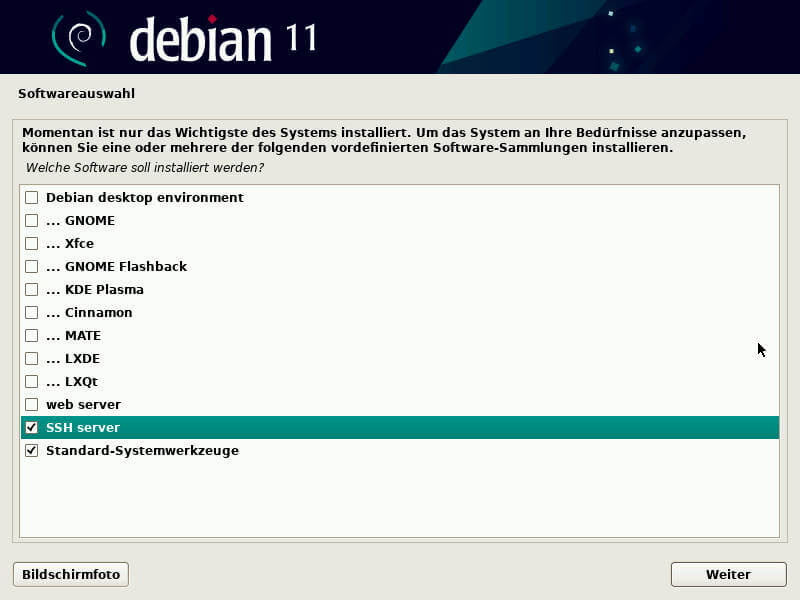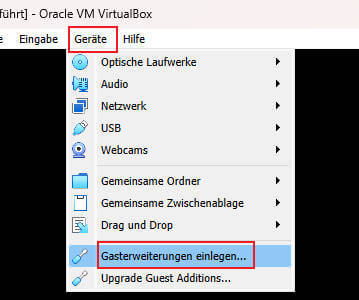Debian 11 Server and VirtualBox 7
Download and install VirtualBox 7
https://www.virtualbox.org/wiki/Downloads
Install VirtualBox extension pack
Just double click on the *.vbox-extpack file
Download Debian netinstall ISO and install as usual
https://www.debian.org/distrib/netinst

Install dynamic kernel modules, kernel headers and compiler
apt install dkms linux-headers-$(uname -r) build-essential
Install libxt6 and libxmu6
apt install libxt6 libxmu6
Install VirtualBox Guest Addition

Mount Guest Addition ISO
mount /dev/cdrom /media/cdrom
mount: /media/cdrom0: WARNING: source write-protected, mounted read-only.Install it
cd /media/cdrom ./VBoxLinuxAdditions.run
Reboot and test the installation
VBoxClient --version
7.08r156879modinfo vboxguest
filename: /lib/modules/5.10.0-23-amd64/misc/vboxguest.ko
version: 7.0.8 r156879
license: GPL
description: Oracle VM VirtualBox Guest Additions for Linux Module
author: Oracle and/or its affiliates
srcversion: 55B45B43FE1759D12174E93
alias: pci:v000080EEd0000CAFEsv00000000sd00000000bc*sc*i*
depends:
retpoline: Y
name: vboxguest
vermagic: 5.10.0-23-amd64 SMP mod_unload modversionsAllow sudo for user
visudo
username ALL=(ALL) NOPASSWD: ALLReplace „username“ with the username of the sudoer.
Rename network interface and set console to 1024×768
nano /etc/default/grub
GRUB_CMDLINE_LINUX_DEFAULT="quiet vga=792"
GRUB_CMDLINE_LINUX="net.ifnames=0 biosdevname=0"Update grub
update-grub2
Edit interface configuration file
nano /etc/network/interfaces
# The primary network interface
#allow-hotplug enp0s3
#iface enp0s3 inet dhcp
allow-hotplug eth0
iface eth0 inet dhcpReboot
Setup Nameservers
Debian 11 is using resolvconf, check status
service resolvconf status

If the status is Active: active (exited) then everything is fine.
Add your nameservers in /etc/resolvconf/resolv.conf.d/head
# Dynamic resolv.conf(5) file for glibc resolver(3) generated by resolvconf(8)
# DO NOT EDIT THIS FILE BY HAND -- YOUR CHANGES WILL BE OVERWRITTEN
# 127.0.0.53 is the systemd-resolved stub resolver.
# run "resolvectl status" to see details about the actual nameservers.
# nano /etc/resolvconf/resolv.conf.d/head
#nameserver 127.0.0.1
nameserver 192.168.0.2
nameserver 192.168.0.4
search lanUpdate resolv.conf
resolvconf --enable-updates resolvconf -u
review resolv.conf
cat /etc/resolv.conf
# Dynamic resolv.conf(5) file for glibc resolver(3) generated by resolvconf(8)
# DO NOT EDIT THIS FILE BY HAND -- YOUR CHANGES WILL BE OVERWRITTEN
# 127.0.0.53 is the systemd-resolved stub resolver.
# run "resolvectl status" to see details about the actual nameservers.
# nano /etc/resolvconf/resolv.conf.d/head
#nameserver 127.0.0.1
nameserver 192.168.0.2
nameserver 192.168.0.4
search lanMake resolv.conf persistent after reboot
crontab -e
@reboot /usr/sbin/resolvconf -uContinue with ISPConfig installation.
